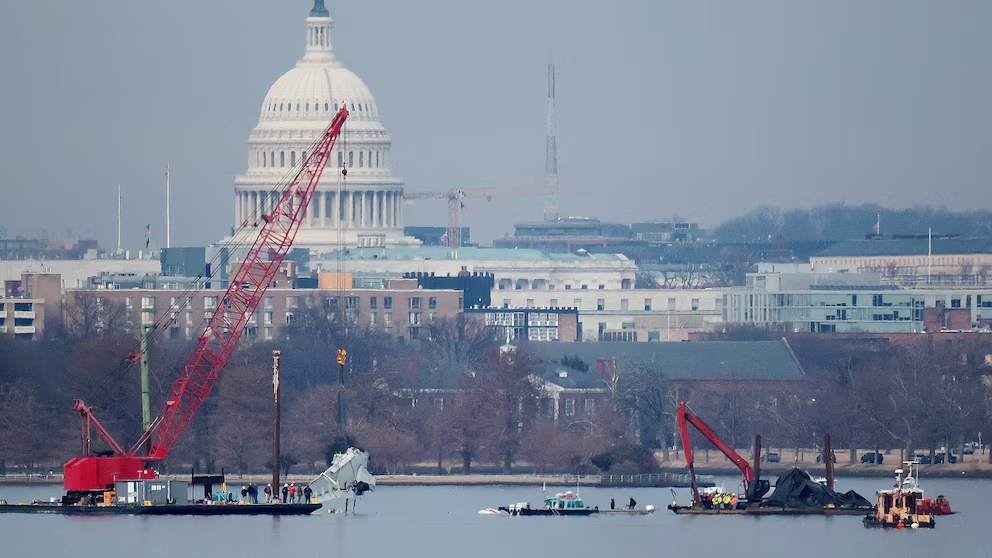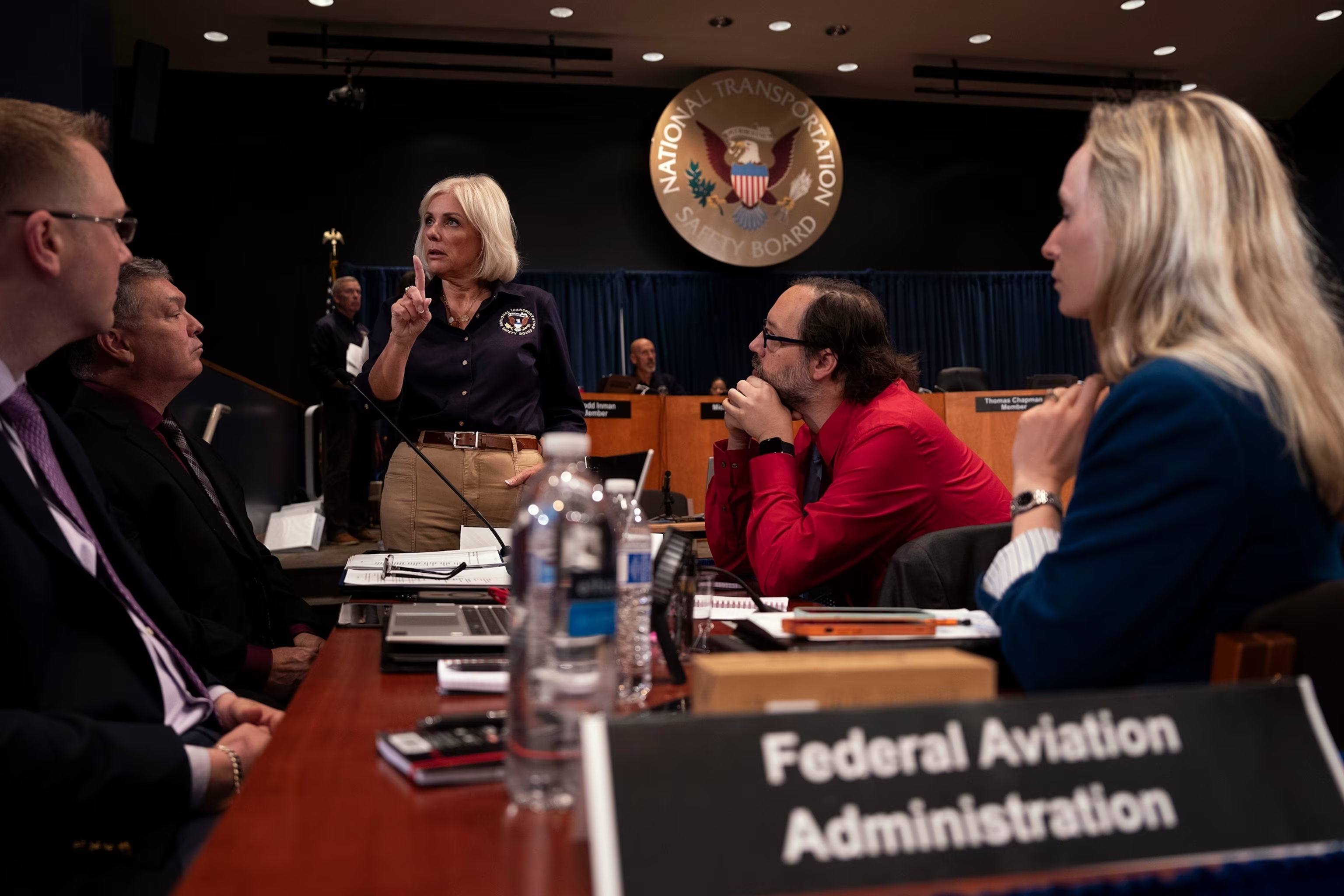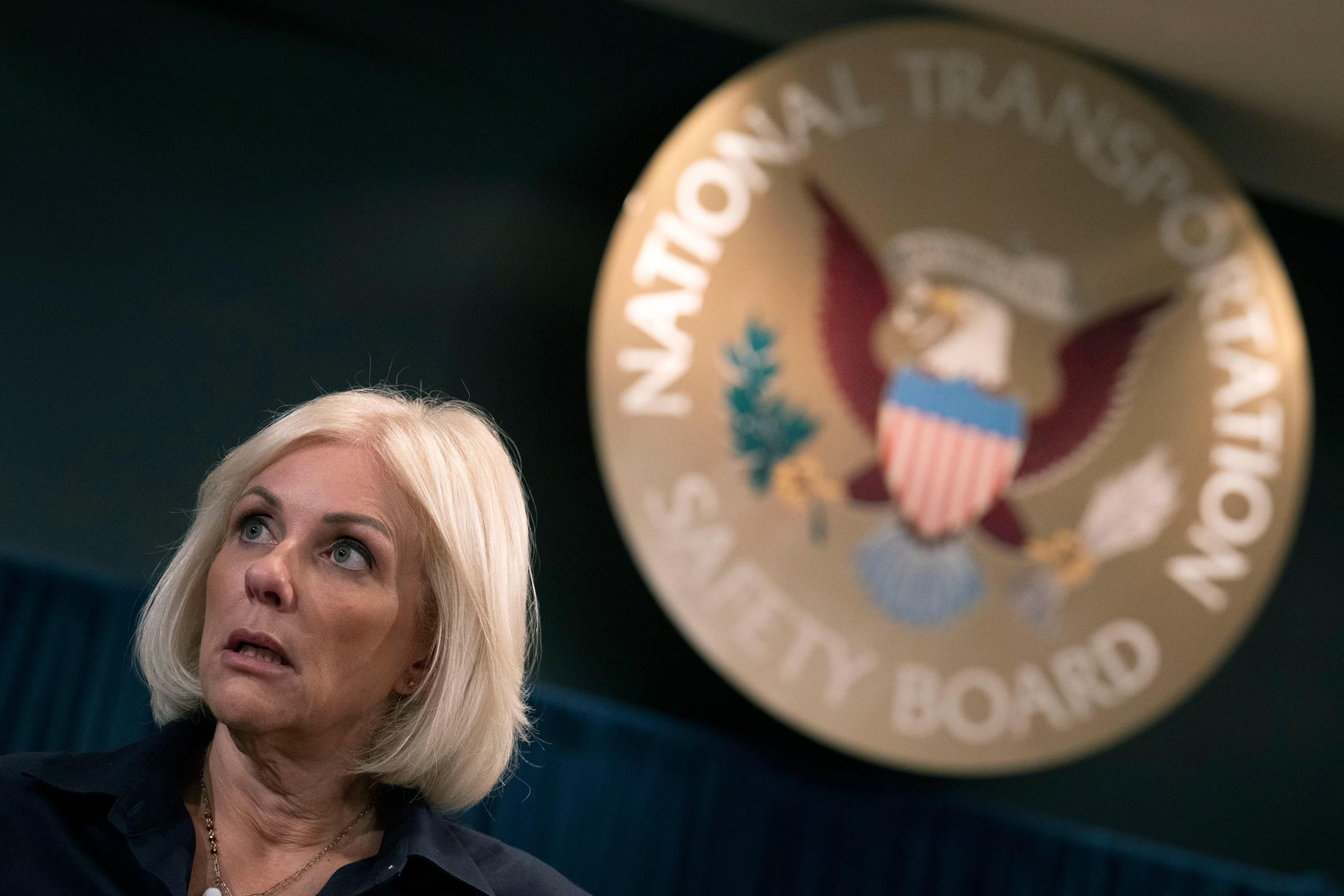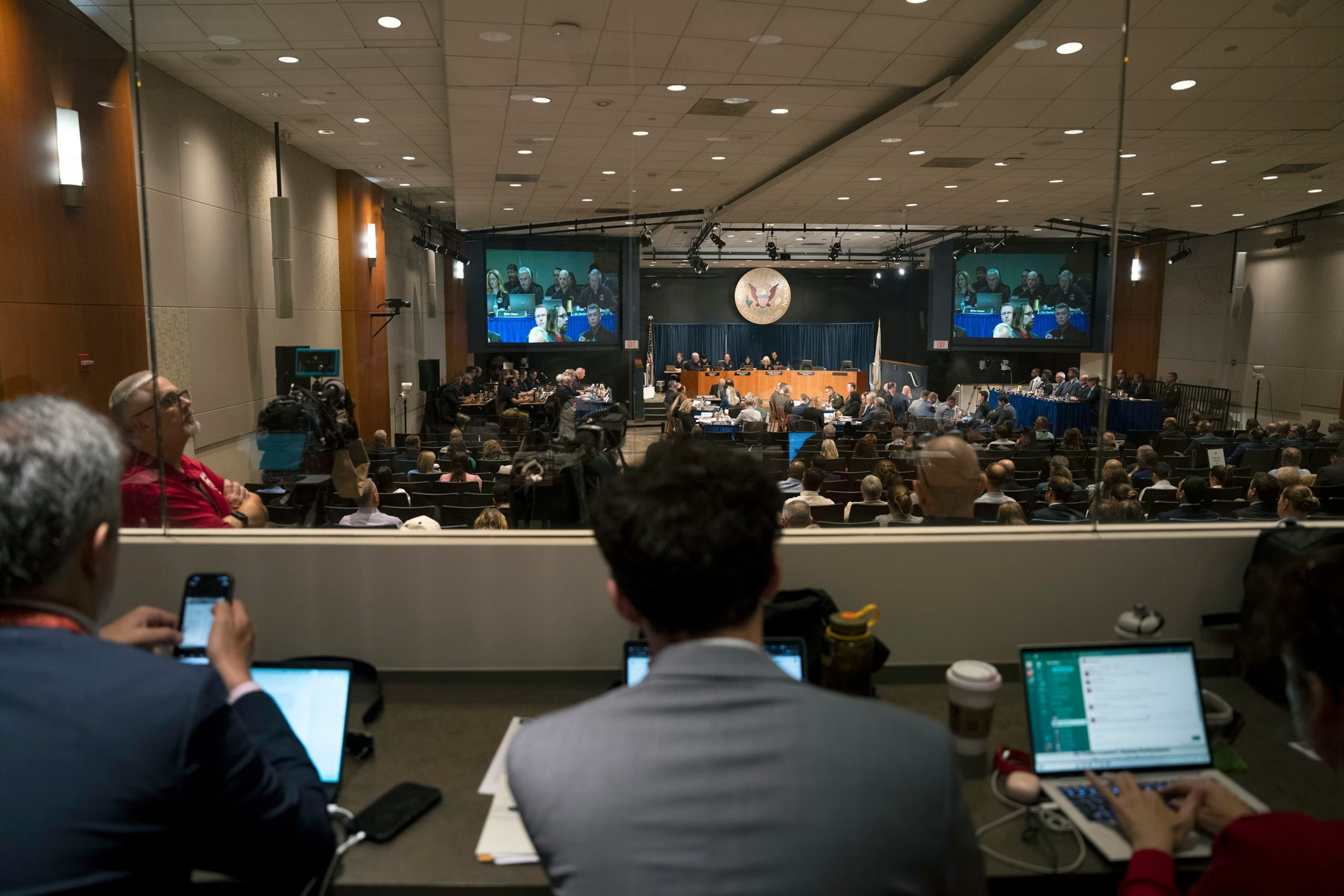
1:40A crane raises a section of American Airlines flight 5342 from the Potomac River during recovery operations on February 03, 2025, in Arlington, Virginia. Win Mcnamee/Getty Images
During hearings on Thursday, the National Transportation Safety Board interrogated officials from the Army, air traffic controllers, and representatives from the Federal Aviation Administration regarding procedures following the tragic air collision on January between a Black Hawk helicopter and a passenger aircraft approaching Ronald Reagan Washington National Airport (DCA).
The session, the second of a three-day series, centered on the training protocols for those involved in the January 29 incident that claimed the lives of 67 individuals. The NTSB commenced the lengthy hearing by assessing the duties and preparedness of DCA’s air traffic controllers.

Chair of the National Transportation Safety Board (NTSB) Jennifer Homendy addresses members of the Federal Aviation Administration before the second day of the NTSB Ronald Reagan Washington National Airport Midair Collision Investigative Hearing on July 31, 2025, in Washington, DC. Kayla Bartkowski/Getty Images
Clark Allen, the previous operations manager of the control tower at DCA, was questioned on Thursday regarding the training provided to air traffic controllers. Allen indicated that controllers are instructed to notify a supervisor and request further assistance if they feel overwhelmed, but mentioned that supervisors do not receive training to proactively monitor for an accumulation of duties.
Officials acknowledged on Wednesday that a high turnover rate among air traffic controllers poses a significant challenge.
On Thursday, officials reported that air traffic controllers had requested a reduction in flights at DCA. A memo sent by controllers overseeing the DCA airspace to their supervisors in 2023 asked for a decrease in arrival rates at the airport. Bryan Lehman, the Air Traffic Manager at Potomac Tracon, who authored the memo on behalf of the controllers stated it “died right there.”
Nick Fuller, the FAA’s acting deputy chief operating officer of operations, testified on Thursday that it is the pilot’s responsibility to maintain visual separation while airborne.

Chair of the National Transportation Safety Board (NTSB) Jennifer Homendy addresses members of the Federal Aviation Administration before the second day of the NTSB Ronald Reagan Washington National Airport Midair Collision Investigative Hearing on July 31, 2025, in Washington, DC. Kayla Bartkowski/Getty Images
“It is the pilot’s duty, but air traffic controllers will go the extra mile to ensure we provide additional information as needed,” he stated.
Later, when asked if air traffic control should have warned the jet crew about the helicopter, Fuller affirmed that they should have.
“I believe a challenge we face is balancing efficiency with safety, and it’s a delicate line to walk, especially given the high demand,” remarked James Jarvis, another FAA official. “Controllers perform remarkably well under these circumstances, but the threshold is quite elevated.”
NTSB Chair Jennifer Homendy stated that the NTSB will continue to investigate the pressures that controllers encounter while managing the DCA airspace.

Reporters observe while working during the National Transportation Safety Board (NTSB) Ronald Reagan Washington National Airport Midair Collision Investigative Hearing on July 31, 2025, in Washington, DC. Kayla Bartkowski/Getty Images
“There was substantial pressure that
Sourse: abcnews.go.com